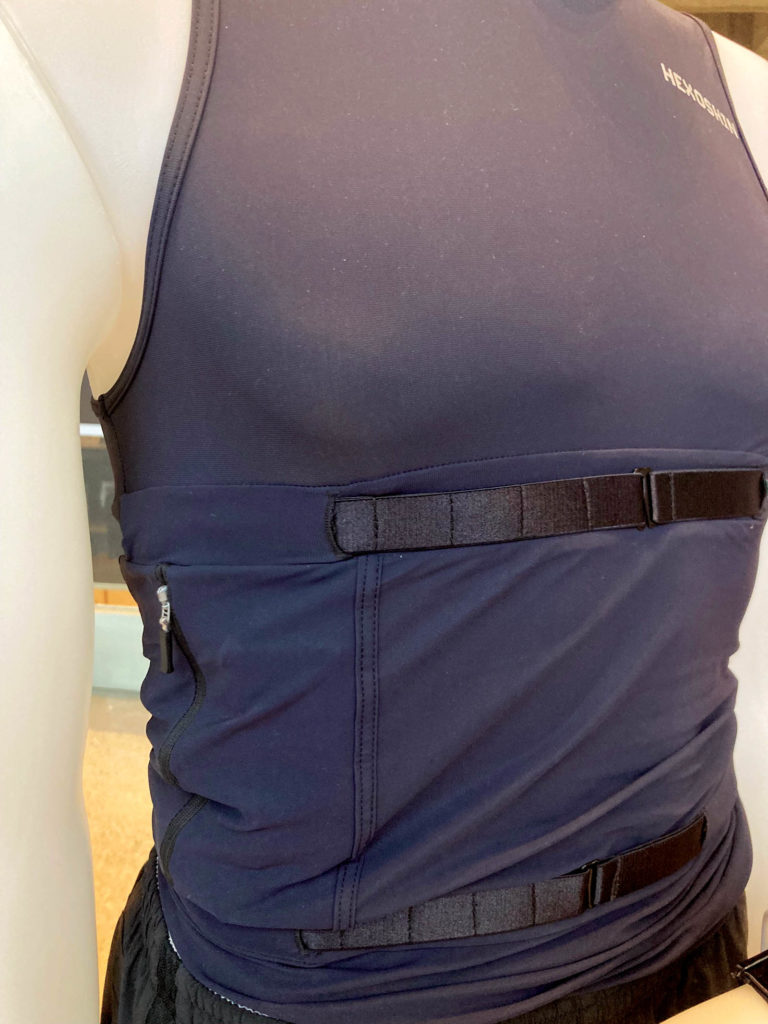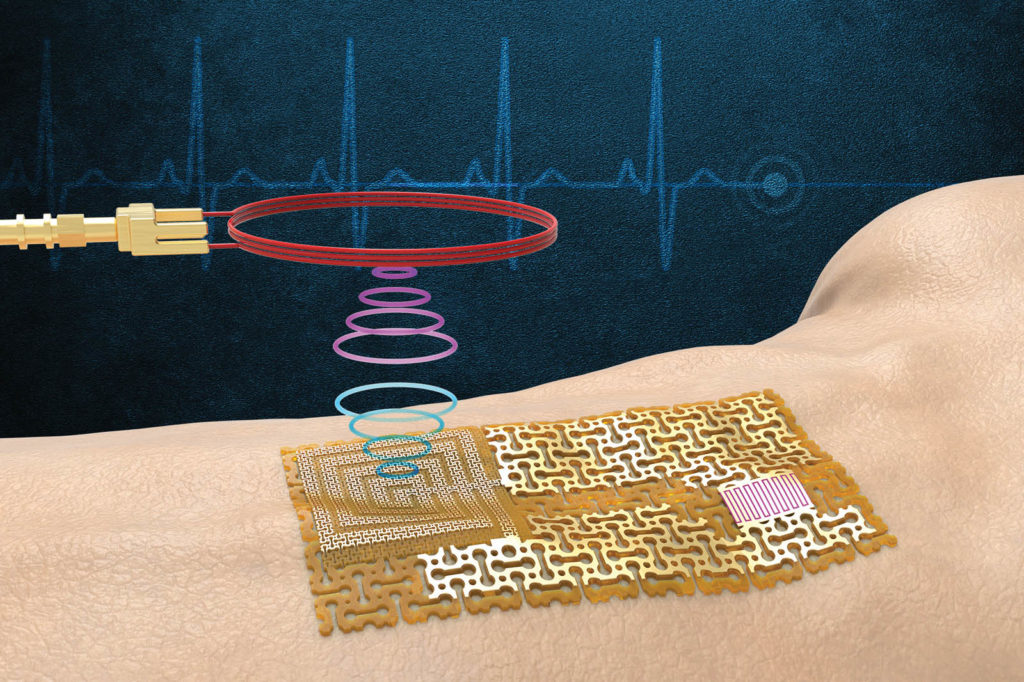
Manufacturing to scale is arguably the most significant challenge facing the smart materials and wearable technology industries—and it’s not just desirable, but essential for growth and survival. Without full commercialization, the drive for new developments and research is in jeopardy. There is no shortage of interest and enthusiasm among stakeholders, which begs the question of why, after more than thirty years of commercialization, are we not further advanced in this? The question is worth exploring, as there are strategies to consider that may be leveraged to achieve a greater level of market penetration.
From startup to established
There is a long list of wearable technology startups, but a far shorter list of those that have grown beyond the initial compelling product offering. One that has is Hexoskin. CEO Pierre-Alexandre Fournier presented at the International Conference on Intelligent Textiles and Mass Customization-ITMC 2022, hosted by CTT Group and held in Montreal, Que., in September.
Fournier was keen to stress the importance of addressing people’s needs rather than being led by technology. This is far from easy, particularly in the health and medical sectors. The company’s evolution demonstrates a measured approach to innovation that does not attempt to achieve everything in the first few years.
From 2012–2015 its focus was on exercise, academic research and defense. This moved to clinical and pharmaceutical trials from 2016–2021. The next period (2022–2024) looks to medical applications—beginning with remote patient monitoring and moving toward automated diagnostics, chronic disease management, remote care and security.
The market size has grown from establishing credibility with about 10,000 unit sales in the first period, to 100,000–1 million in the second (current) period. The list of solutions the company is focused on includes a mixture of rare and more widely known conditions such as epilepsy, heart failure and pain management. For Hexoskin, it is a business model for achieving both scale and innovation.
Wearables acceptance
In their paper titled “Antecedents for Older Adults’ Intention to Use Smart Health Wearable Devices-Technology Anxiety as a Moderator,” researchers at the National Open University, National Changhua University of Education and National Quemoy University in Taiwan, address the issue of the “technologically anxious” among this demographic as a barrier to adoption. Technology readiness coupled with ease of use and perceived benefit were found to be the key factors in adopting wearable technologies.
Achieving comfort in wearable technology is a consistent goal for researchers and manufacturers across all market sectors. Increasing wearability in garments ensures that they are being worn as intended and is particularly important for items designed to be worn over long periods of time. Fitness and workwear have one set of demands based on activity levels, movement and body temperature, and while seniors share some of these requirements, the parameters are very different.
The impact of demographics
HealthTech magazine has identified three key care technology trends: the adoption of a hospital-at-home model; tech-concierge roles to assist seniors; and wearables as a means of giving seniors more control of their health care.
One of the issues with smart materials and wearables in the past has been that users (particularly early adopters) are quick to move on to the next new thing, with brand loyalty not necessarily following to the next purchase. With the older demographic, the driver is not the thrill of the new, but is motivated by the desire for a better quality of independent living that will hopefully keep them in their own homes and out of a care facility. Research shows that 77% of adults over the age of 50 want to remain in their own homes longterm. That is a very different impetus.
As to the potential for market growth, studies from the Urban Institute estimate that the number of households headed by people aged 65 and older will grow from 34 million to 48 million over the next two decades. Samsung has already identified a market direction here:
“With wearables, particularly with the aging population, it’s a different way of engaging them than mobile devices, because we can collect information like body composition, heart rate to detect arrhythmia and sleep score—and it’s only going to get better,” says Hon Pak, M.D., chief medical officer at Samsung Electronics in a 2022 interview in Fierce Healthcare this year. He adds, “We’re in the home with mobile devices, TVs and appliances, and we see the collision of health care happening in the home.”
The use of the term “collision” suggests that we may be looking in the wrong place to define scale, and it may be more productive to view each element as both independent and connected at the same time. Might this be the way to achieve scale in manufacturing?

R & D questions
Underlying the commercial success of a new technology or its application is a commitment to innovation through research and development. But is R & D an attractive and useful strategy in times of economic difficulties? Recent research by Northwestern University’s Filippo Mezzanotti and his team show that an economic crisis has both positive and negative influences on innovation.
In the case of the Great Depression of the 1930s, they discovered patenting data indicating that while it has a negative impact on independent entrepreneurship, innovation gets redirected to larger firms. Larger firms and multinational corporations that do not have liquidity problems invest in R & D activities as a way of diversifying and enhancing their product offerings. Similarly, the pandemic and the subsequent inflation crisis have created a necessity among manufacturing and commodity products sectors to look for investments in R & D.
Planning ahead
Given the current economic challenges, businesses could find it beneficial to include resource allocation for R & D in long-term planning. While disruptive innovation may lead to the creation of new products and opportunities, demand-specific incremental developments are also welcome.
This became evident during the height of the pandemic. While filtering facepiece respirators such as N95s, were manufactured by a few established multinational companies, many smaller enterprises that were nimble and creative utilized existing resources and explored collaborative opportunities to make other PPE products.
Combined effort
Collaboration with government laboratories such as National Institute for Occupational Safety and Health (NIOSH), Naval Research and Air Force Research laboratories and research-intensive universities is an important step forward for large- and small-scale sectors. Such interactions will help to plan, analyze weak links and allocate resources.
“It is clear that the research and innovation conducted at universities has a beneficial impact on the economy. The Bayh-Dole Act of 1980 was the landmark legislation promoting commercialization of U.S. university technologies,” says Cameron Smith, Texas Tech University System’s commercialization director.
Challenging economic situations call for planned actions as well as course corrections. It is time for national governments and industries to look for win-win investments. “Now, when we are having economic problems, we should re-group and plan ahead,” says Velmurugan Shanmugam, general manager of Aruppukkotai, India-based Jayalakshmi Textiles. Given the high volatility in raw material prices and the slump in demand for commodity products, the need to become more involved in R & D has risen.
Shanmugam says, “The textile industry should pay more attention to advanced textiles, develop sustainable products and enhance its marketing capabilities.”
“Especially in times of economic downturn, universities and their innovations are the lifeblood for positive economic impact,” says Smith. “Even when industry is forced to cut back on its own research, research is still conducted and technologies are created as a result of the research activity at universities, continuing to have economic impact and creating job opportunities around inventions and innovations.”
R & D is needed to enhance productivity, promote the use of more sustainable energy sources, save energy costs and develop new products. There is some positivity amidst economic stress and the ongoing pandemic: the realization of the importance of R & D.
Dr. Marie O’Mahony is an industry consultant on smart and advanced textiles at O’Mahony Consultancy, and she has an academic position at the Royal College of Art, London. Dr. Seshadri Ramkumar is a professor at Texas Tech University, Lubbock.
 TEXTILES.ORG
TEXTILES.ORG


